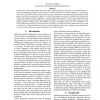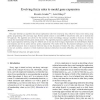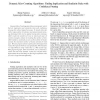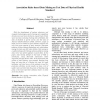1170 search results - page 51 / 234 » Experience with Ripple-Down Rules |
LREC
2010
14 years 11 months ago
2010
Learning texts contain much implicit knowledge which is ideally presented to the learner in a structured manner - a typical example being definitions of terms in the text, which w...
BIOSYSTEMS
2007
14 years 10 months ago
2007
This paper develops an algorithm that extracts explanatory rules from microarray data, which we treat as time series, using genetic programming (GP) and fuzzy logic. Reverse polis...
155
click to vote
ICDE
2000
IEEE
15 years 11 months ago
2000
IEEE
Dynamic Miss-Countingalgorithms are proposed, which find all implication and similarity rules with confidence pruning but without support pruning. To handle data sets with a large...
109
click to vote
CSO
2009
IEEE
15 years 4 months ago
2009
IEEE
With the development of modern electronic and computer technologies, sports training and competition became more and more technical. A great deal of data were recorded, including ...
ICDAR
2009
IEEE
15 years 4 months ago
2009
IEEE
Training a system to recognize handwritten words is a task that requires a large amount of data with their correct transcription. However, the creation of such a training set, inc...




